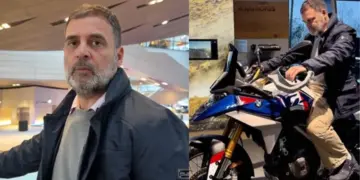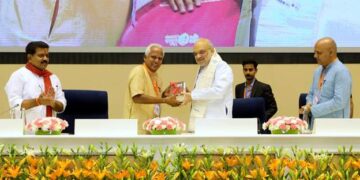By: Craig L. Hall
Trafficking in persons is a hidden crime that affects people from all backgrounds all over the world. At the heart of the crime is the exploitation of an individual and the myriad coercive and deceptive practices traffickers use to take advantage of their victims. India and the United States of America have joined more than 170 states in adopting the ‘Protocol to Prevent, Suppress and Punish Trafficking in Persons, Especially Women and Children’, supplementing the Palermo Protocol that sees human trafficking to include sex trafficking, involuntary servitude, debt bondage, forced labour and domestic servitude. Children and minority groups are especially vulnerable to this evil practice.
Human trafficking is often considered an outcome of poverty. Jobseekers may be forced into labour in the informal economy or may willingly migrate to another state or country for work where they may incur a debt or a wage advance that is used to hold them in debt bondage. Poor families sell their children for work, and some end up victims of sex trafficking or forced labour. However, the exploitation of children is also an outcome of India’s rising wealth, as the country’s growing middle class has created a surge in demand for domestic workers — jobs mostly filled by women and children.
Social media have made it easier for sex traffickers to find new victims; they can remain undetected by the authorities and prey on unsuspecting children and job-seeking women. Traffickers broadcast WhatsApp messages; if anyone responds, they are drawn into the trafficker’s net. Trafficking syndicates now exploit the deepening internet and smartphone penetration in rural India. Earlier, trafficking schemes required face-to-face interaction. Technology has now helped traffickers become invisible.
India combats human trafficking through the four ‘P’s: prosecution, protection, prevention and partnership. The Centre has set up infrastructure which states implement including anti-human trafficking units and schemes for the rehabilitation of victims. Some states also run their own awareness activities and even partner with NGOs to do so. But more must be done.
The US consulate in Calcutta recently hosted the Seventh Anti-Trafficking in Persons Conclave where civil society, local government officials and experts on human trafficking participated in a dialogue on developing more vigorous bilateral and regional cross-border response mechanisms to address trafficking, strengthening the existing anti-trafficking systems, and expanding research to understand emerging regional trends. Coordination among a wide variety of stakeholders, both externally with foreign governments and internally within states and countries, is key.
In the US, the President’s Interagency Task Force on human trafficking, made up of more than 15 agencies, works to address the issue. This includes the enforcement of criminal and labour laws to end impunity, victim-centred identification and protection services, innovations in data gathering and research, education and public awareness activities, and synchronization of strategically linked foreign assistance and diplomatic engagement.
The conclaves organized by the US consulate in Calcutta have created international networks and awareness about the global fight against trafficking in persons. The conclaves are bolstered by awareness campaigns and film screenings that are followed by interactions with local stakeholders. The consulate has also designed language-specific exchange programmes for selected grass-roots activists and other actors. Lately, it has been working on empowering youth leaders by providing them with skill development opportunities that will help them build community resilience.
The scourge of human trafficking is an affront to dignity and compassion. There are numerous ways to join with local and national groups and support the Indian government’s efforts to eradicate this evil.
Courtesy www.telegrpahindia.com






